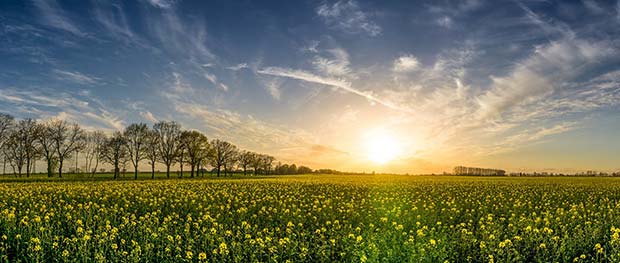Today’s eco-conscious consumer wants to shop from ethical businesses. Businesses are responding and this adjustment to their modus operandiis here to stay.
Where can this be seen? In one example, Aqua-Yield has created a way to deliver nutrition and liquid directly to crops on a cellular level. This means faster seed germination, less wasted water, and healthier plants, plus better soil.
But it is not only leaders in the agriculture industry who are innovating for environmental friendliness. Innovation toward eco-consciousness can be seen across all industries.
It’s been a long time coming, this rise in public consciousness for the need to take responsibility for how we consume earth’s resources. How did we get here?
In 1962, Rachel Carson published a book on the harmful effects of pesticides on the environment in her book, Silent Spring. In more recent years, documentaries such as An Inconvenient Truth directed by Al Gore and Before the Flood by Leonardo DiCaprio. Those films helped to explain the impact of worldwide manufacturing on global warming. Which connected the dots for the average consumer on how manufacturing impacts the environment.
Online social media campaigns have been helpful, too. At the very least, they announce Earth Day and promote smaller actions individuals can take. These events, plus news coverage over the Paris climate accord has helped to place the need for change in the public consciousness.
Following the Millennial money trail toward better business practices
This shift, however, might not be fully with the good of the planet in mind. The Shelton Group found that 90 percent of Millennials would prefer to shop from an eco-friendly company. One compelling reason? Millennials would prefer to not be seen shopping from a business that is exploiting the planet, according to this article by Fast Company.
This matters to businesses because there are approx. 80 million Millennials in the US, with spending power to the tune of $600 billion per year. Additionally, Accenture predicts that their spending will grow to represent 30 percent of all retail sales.
Businesses keen to gain and keep their Millennial-age customers know that have responded. Whether for monetary reasons, or with noble intentions, so long as forward progress is being made, should it matter?
Well-known eco-conscious businesses, innovating for the environment
This year IKEA has announced it would phase out single use products by 2020. This means that they will no longer be selling plastic utensils, and paper plates and cups. This move is one in a long history of decisions that IKEA has made in its commitment to sustainability.
Their buildings are built with efficiency in mind, so less energy is needed to both build and run them. Additionally, the Swedish manufacturer sources 50 percent of its wood from sustainable forests. They have stated a commitment to increase this percentage of wood from sustainable sources. 100 percent of the cotton it uses in production come from farms that meet strict environmental standards. Their website proclaims that they are working toward 100 percent renewable energy from solar and wind powered sources. And producing as much energy as they consume through their operations.
In 2016, activewear company, Patagonia pledged $10 million to environmental groups. Naturally, the company has come under fire for their use of fossil fuels to create certain of their products. But they have also been open about their need to innovate and change their production model. Additionally, they have built centers across the globe that are aimed at finding ways to lower their carbon footprint. In one surprising and noteworthy move, they released an ad campaign that discourages wasteful consumerism.
Starbucks is another company with guidelines governing their eco footprint.
They, too, have often failed to hit much publicized environmental goals. For example, in 2010, Starbucks announced they would raise and donate $10 million through sales of Ethos Water. The company raised only $6.2 million in that year. But did go on to set aside more than the stated amount, which they donated to alleviate the world water crisis.
While it seems they often miss their stated goals, many environmental experts are impressed with the ambitious goals they do set. One research analyst notes that when compared to industry peers, Starbucks’ eco rating is in the 90th percentile.
Additionally, Starbucks regularly looks for ways to build and operate stores in a manner that reduces their eco footprint. Starbucks has used the LEED certification program as a benchmark for building and installation. They are also focusing on water conservation, both in tracking consumption and with goals to reduce that consumption.
